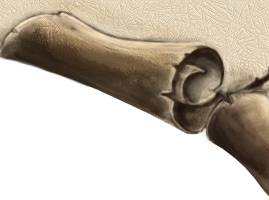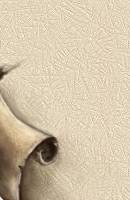
HISTORY OF RUNES

Many people who lived Scandinavia for more than 1000 years ago could both read and write. But they did not use the same letters as we do today. They wrote in runes.
Runes are a kind of characters, like letters. The characters are thus used to represent sounds of words in writing. There have been three different runes types used in Sweden, the ancient Norse futhark, the Viking runic alphabet and the medieval runic alphabet. Runes are characters that are usually carved in wood or bone with a sharp tool, such as a knife. Runes has almost never been written with ink on parchment or paper, but there are some medieval manuscripts with the use of runes in place of ordinary characters. One of theories and explanation regarding how runes came to use is that some merchants from the Nordic countries on trade trip to the Roman Empire saw how the people of the Mediterranean could write messages to each other by using letters. It seemed useful to send a message to someone who was far away. When traders come home to Scandinavia again, they created characters that suited the language spoken in northern countries. The runes had arrived. If you look at the shape of some of the runes in the ancient Norse futhark can see that they resemble the large letters used in the Latin alphabet. When you see how much the letters and runes are similar, you understand that those who created the runes had seen how the letters looked like. Runes were formed roughly 2000 years ago. The earliest runic inscriptions that have been preserved are from the 100-second century AD and all the oldest inscriptions are written in the ancient Norse futhark. The oldest inscription found in Sweden is to be found on a spearhead found in a bog at Gotland. It dates from the mid 200's AD. There are only five runes on the spear leaf. Translated into Latin letters, it says "gaois". Nobody knows for sure what that means. There are also few bracts which have been carved with entire runic alphabet around the edge. Bract is a sort of pendant made of gold. It consists of a thin gold plate with pressed pattern. Bract in the picture is from the 500s AD. And found during archaeological excavations in Vadstena.  http://en.wikipedia.org/wiki/File:Bracteate_from_Funen,_Denmark_(DR_BR42).jpg 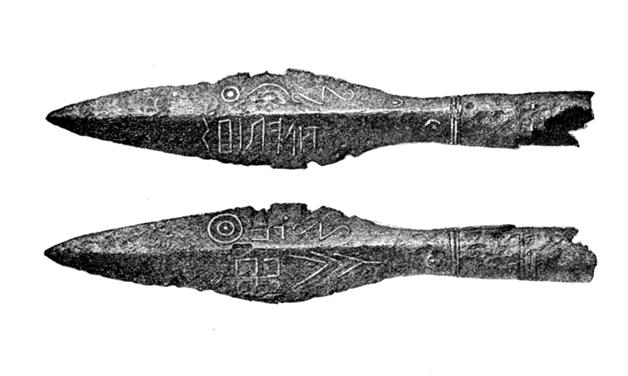 http://en.wikipedia.org/wiki/File:Spearhead_of_kovel.png In a tomb from Kylver on Gotland there have been found a stone slab with almost all of the ancient Norse futhark. Only the first rune has disappeared due to erosion. The tomb dates from the late 300's or early 400's AD. It is unclear how to understand the character to the right after the last rune, which looks like a tree. High up on the right are five runes, which translated into Latin characters are saying sueus. The word means as far as we know nothing, but it is known as a palindrome. A palindrome is a word that is the same whether you read it forwards or backwards. It is believed that the palindromes were magic words.  http://en.wikipedia.org/wiki/File:Kylverstenen_2.jpg The Ancient Norse futhark Those runes were used from about year 0 to 800 and were called the Ancient Norse. They are called so due to that the language back then in Sweden and other Nordic countries was called the Ancient Norse. There were 24 characters in the Ancient Norse futhark. You can see below how the Ancient Norse runes looked like. The letters that are on the line below stands for the runes that would indicate which letter you would have used to write the same sound. Th means that the rune used läspljud (Thorn letter, special sound used in Scandinavian country's), same as in the English words thing and that.  During the Viking Age people used not quite the same runes as previously. In the early 800s there was a change in the runic alfabeth. Some of the runes maintained theri appearance. Few were removed completely, some were given a new look and some brand new creations apeard. The reason for changing the runes was that the language which people spoke had changed during the period of 800 years. Some sounds had disappeared and some new ones had been added since the time of the Ancient Norse runic alphabet was created. Among the new sounds that became to be used in the Swedish language back at the 800's was y, ä and ö. The Viking age runic alphabet Viking age is a time frame which lasted from about 800's to the beginning of the 1100s. From the 800s people started to use a runic alfabeth which consisted of 16 characters instead of 24 characters like the one called for The Ancient Nors futhark. It is with the Viking futhark that the world wide known stones were carved with. Below you can see how the runes that the people used during the Vikings age looked like.  It may seem odd that there are two different r, one that is written like a small r and and one that is written like a capital R, the last mentioned was used as the last rune in the runic alphabet. The last rune is rather rare and is used almost exclusively at the end of words, usually in the boy's name. The r-sound is pronounced differently. The people in the Viking Age concidered that there is need for a special rune for it. People during the Viking Age did not know how the Latin letters looked like and what they were called. Therefore, all the runes had a name. And they used the character of the sound the name began with. For exemple the s rune was named sol (meaning the sun) and the n rune nöd (meaning need). If you look at the usual letters under runes you will see that many letters, which you normally use when writing, are not included. This is because many of the runes used to denote more than one sound. Below are all the different letters as a rune can represent in th erunic alfabeth.  The medieval runic alphabet When the Viking Age came to its end usage of runes continued nonetheless in Sweden and most of Scandinavia. At that time there were already many who people that could write in cursive script with Latin letters. Many priests and others who belonged to the church used the Latin alphabet letters, but also there were many ordinary people that used just runes. On the other hand many of those who could write with Latin letters used and had knowledge in carving runes too. They probably thought it was inconvenient that there was not enough runic characters that you could spell the same way as when you do while writing with the Latin letters. People started adding small dots and lines to the runes so they could distinguish them and so they could be used as what they sound like. This change made that now there was as many runic characters as there were Latin letters. Below you can see how the runes used in medieval times looked like.  You can see that there is now a runic alfabeth containing almost all the letters we use today, except a This letter was not in the alphabet during the Middle Ages. This special letter was introduced to the alfabeth few hundred yeas ago. Beside the letter a the alfabeth lacks q, w och z. The reason to this is that there was no need to use those letters to write in Swedish during the medival ages. The vast majority of runes were carved into a wooden sticks and not on stones as you might presume. Runes and their shapes are verry suitable to be carved into the wood. But most of the inscription known to us today are left in stone, explanation to this is that stone is a strong material that lasts for several hundred years, but wood is fragil. Some inscriptions in wood are found and preserved, archaeologists in all cases find those artifacts during excavations. A piece of wood that has been resting in the moist clay, for example, may have been preserved due to oxigen poor enviroment that prevented the material from desolving. There are also a lot of runic inscriptions preserved on metal, horns and bones. But the stone is still most common and best preserved material with runic insriptions. There is no actual explanation to why it was so common during the Viking Age in Sweden to raise and carve runes in memory of a dead relative. Sometimes you can interpratet the text on the stones and the reason of erecting them as an act stressing the inheritance of land and property. On thos carvings, one can see who inherits the dead man's house and other belongings. Sometime you can see that the text on the stones just acted as a sign of boundarys between two peoples property. But most often it seems that the intention was primarily to erect a magnificent monument. Those who died were buried in the cemetery, or some place far from home for exemple when someon died during a conquest. In any meaningful place a erected memorial stone told a story about the dead person, and sometimes described what great things the person achived during his or hers lifetime. For over 100 years, from the late 900s to early 1100's, people in Sweden raised memorial stones with inscriptions when a relative had pased on. If there was a suitable flat rock or a boulder at the site where they wanted to carve the runse, they did so directly on the spot. Most inscriptions used the Viking runes, but some runestones are older. They were carved from 400's to 700's with the Ancient Norse futhark, but they are very rare compared to the Viking Age runic stones. Almost all the stones from the Viking Ages contain same basic structure of content. The runestones erected by relatives in memory of someone who had died. First of all we get the information regarding who are the persons who erected the stone. For example "Torgisl and Gisl" those are two Viking Age boy's names. Then one can read "erected the stone,", "let cut hob after" or "carve the runes for" or something similar. After that the name of the dicesed person, such as for exemple "Sven". At the end of the carvings the runse are telling us how the dead person was related to those who raised the stone. Most common ending of the incription is "his father", "his brother" or "son". Sometimes the text ends with a prayer. Most common is "God help his soul.". A common insription can say "Halfdan had this stone carved after Joger, his brother, and Gudfrid his son. God help his spirit.". Some of the inscriptions can be longer and they can then tell a story about a jurney during wich the person died, for example in Greece or conquest of England. In few inscriptions one can read that those who raised the stone also built a bridge or a road. The possisioning of the monuments palyed also an importent roll. Most of the erected runestones can be found along rivers, sea, roads and bridgse. Basicly everywhere where people could clearly see them. There are also few findings of rune stones that are erected on ting places (ting a form of ceremonial and formal meeting place). There are also exemples of erected stons after people that built bridges and cleard pathways. The bridges are called rune stones bridges. Those bridge were more an embankment then somthing that you woule refere as a bridg now days. On a stretch of road where it was wet and muddy builders filled it up with logs, twigs and stones so that it became firm ridge that you could ride or travel on. In few cases if a man who died had been very rich and powerful his relatives could place the stone on the assembly place called ting. Ting as mentioned previously was a place where gathering and taking of important decisions took place. It had a similar function as a town hall or a court. Erecting a runic stone at ting was a clear symbol of power, importance and memory of a person with great influence over some area. 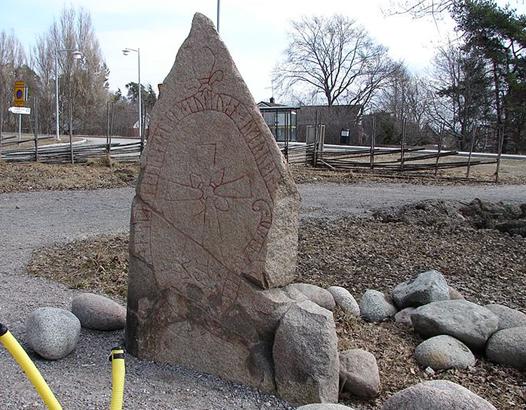 http://sv.wikipedia.org/wiki/Fil:Jarlabankes_bro_(U165).jpg Rinkaby, Närke a runik stone near still used road and Jarlabankes bro (runestone bridge) Täby near Stockholm.  http://en.wikipedia.org/wiki/File:Holmfastristning_2008a.jpg "Holmfast lät röja denna väg" - "Holmfast cleared this road" Holmfastvägen in Södertälje. 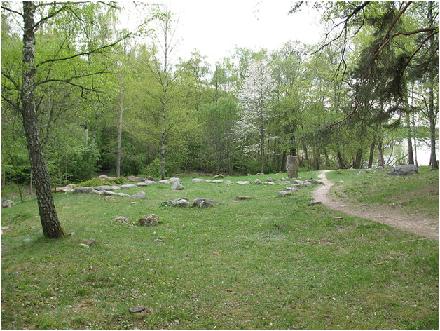 http://en.wikipedia.org/wiki/File:Arkils_tingstad.JPG 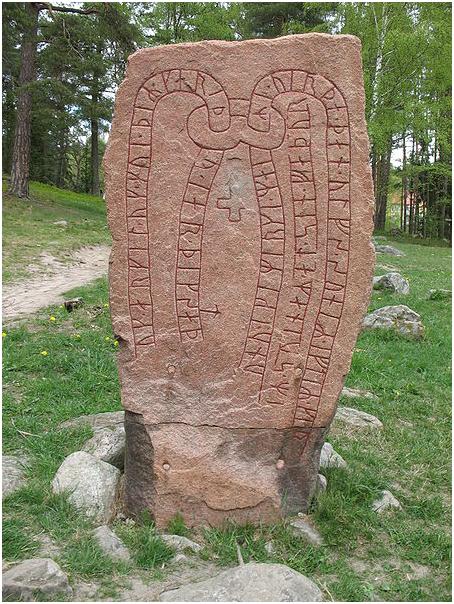 http://en.wikipedia.org/wiki/File:U_225,_Arkils_tingstad.JPG  http://en.wikipedia.org/wiki/File:U_226,_Arkils_tingstad.JPG Bälsta tings in Vallentuna. Two runstones are erected on this place. There are also findings of runic stones that are containing a form of poems. They are written with verses and are called runicpoetry. The structure of those poems is quite different then the poems in modern days. Usualy they were written in two lines and the important thing was that two or three words in each line would start with the same letter. Unfortunatly it is impossible to translate those poems even to modern Swedish. One exemple of runic verses can be found at Sälna bro in Upland. The translation to modern day Swedish says: "Alltid skall ligga medan aldrarna leva bron hardslagen och bred efter den gode. Svennerna gjorde den efter sin fader. Ej kan en bättre brovard byggas." Translation to english is: " Always to serve as an ages live hard beaten, wide and after the good one. Svennerna did it after their father, Not a better build brige was made" Some of the words in modern day Swedish used in this poem might feel starnge and hard to understand. For exemple: aldrarna leva (ages live) meening: as long as people are alive. Hard beaten (hardslagen) is refering to be strong and well built. The part sayin after the good one (efter den gode) refers to and is a shorten term for the good father. Svennerna means simply the young men who built the brigde and who raised the stone in memory of their father wich (brovard) referes to. Towards the end of the Viking Age people began to write verse with rhyming words at the end. There are only a few such verses on rune stones and one of them can be found in Vallentuna church. The verse on this one sounds something like this: "Han drunknade i Holm hav. Hans gick i kvav, bara tre kom av." English: : "He drowned in the sea Holm. His creak went onto the rocks, only three came off." Them meening of this poem says basickly that someone drowne when his ship sunk and just three people survived. 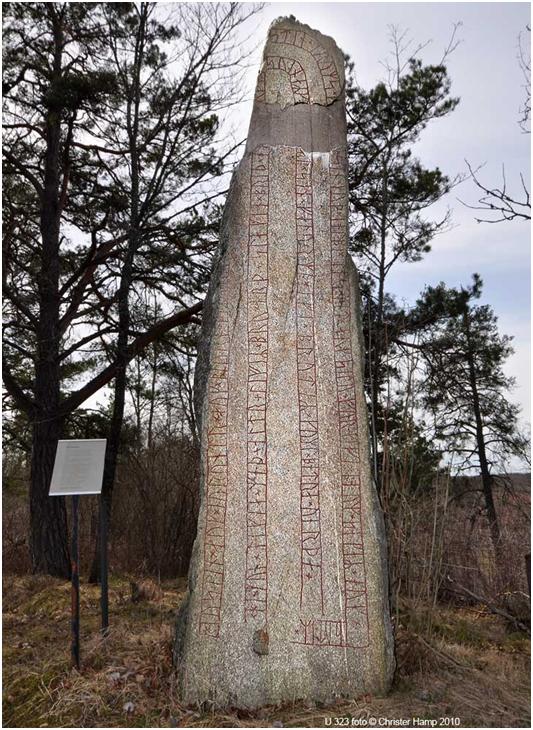 http://www.christerhamp.se/runor/gamla/u1/u323s.jpg 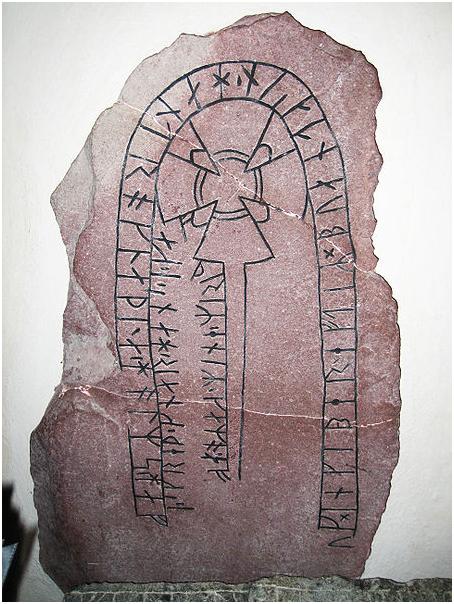 http://commons.wikimedia.org/wiki/File:Upplands_runinskrifter_214_vallentuna_kyrka.jpg Runic ston at Sälna bro in Upland and the rune stone found in Vallentuna church. There are also other types of rune stones erected during this period of time. In few rune stones, there are multiple shapes and images. Sometimes it's almost looks like animated fairy tale. It's usually stories about the Norse gods Odin, Thor and the others. Tales of the Norse gods known as myths. On most of the stones the runes are carved between two lines. These two lines often terminates in an animalistic head at one end and a tail on the other. They resemble much like dragons or serpents. Since we do not really know what kind of animal it is supposed to be, we usually call them rune animals. On a large rock not far from Eskilstuna in Södermanland's one can find a carveingin telling the story of Sigurd Fafnesbane. The carving shows: 1. How Sigurd is sitting naked in front of the fire preparing the dragon heart, from Fafnir, for his foster-father Regin, who is Fafnir's brother. The heart is not yet fully roasted, and when Sigurd touches it, he burns himself and sticks his finger into his mouth. As he has tasted dragon blood (some blood was on the heart), he starts to understand the birds' song. 2. The birds say that Regin will not keep his promise of reconciliation and will try to kill Sigurd, which causes Sigurd to cut off Regin's head. 3. Regin is dead beside his own head, his smithing tools with which he reforged Sigurd's sword Gram are scattered around him, and 4. Regin's horse is laden with the dragon's treasure. 5. is the previous event when Sigurd killed Fafnir, and 6. Ótr from the saga's beginning. 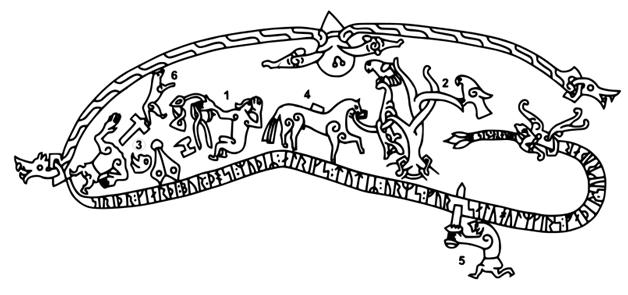 Another myth that is depicted with carved rune is Thurs fishing story. This stone can be found in Altuna church in Uppland. The stone shows Thor beeing out in the sea in a boat aboute to catch the Midgard Serpent. Thor is in a boat and holding his fishing rod. As the bait he has uses a bull's head. Midgard serpent winds down under the boat and gapes to swallow the bait. When Thor catches the snake, it becomes so heavy that he steps through the boat's bottom and makes a hole as he tries to pull up the catch. Tor is forced to throw his hammer Mjolnir in the head of Midgard Serpent's so that it will release the hook. 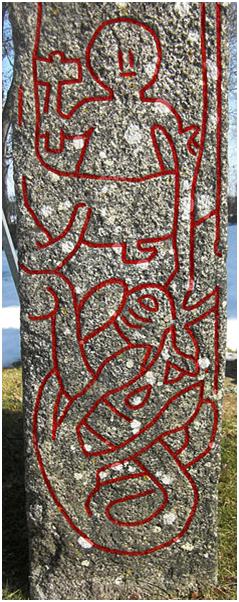 http://sv.wikipedia.org/wiki/Fil:U1161_Altunastenen_Tors_fiskaf%C3%A4nge_2.jpg There is no other country that has as many rune stones as Sweden (about 2500). Denmark has about 300 runestones from the Viking Age and in Norway there are no more than about 50. But there are some intresting findings from Bergen on Norway's west coast where archaeologists have unearthed hundreds of small wooden sticks from the middle ages with long or short rune texts. There are no rune stones erected in Finland, which we can for sure date back to the Viking Age. Nor are there any Viking Age stones erected on Iceland, but there are some inscriptions that are dated to younger period of time. Many people from Scandinavia settled in various places in the British Isles, the Orkney just north of the coast of Scotland and the Isle of Man for example. There are about 50 inscriptions with texts that are similar to those found on the stones that are raised in Sweden. So far there has been only one finding of rune carvings made by Vikings on the road to the east. It was found on the island Berezanj in the Caspian Sea. This is no ordinary rune stone, the inscription is carved on a stone that had been part of a coffin. On it it says: "Grani made this stone coffin after Karl, his companion (or friend)" - "Grane gjorde denna stenkista efter Karl, sin kamrat (eller kompanjon)".  http://en.wikipedia.org/wiki/File:Berezanj_runestone.jpg Istanbul bears marks of Vikings carving their names at the St. Sophia Cathedral. On a marble balustrade, you can read the two names Halfdan and Are carved with runes.  http://cdougan.wordpress.com/2012/06/08/istanbul-turkey-surprising-visitors/ Many Vikings sailed on Viking expeditions to foreign lands. That is probably what the Viking Age Scandinavians are best known for today. Sometimes those expeditions are mentiond in runic carvings. Some of the Vikings traveled east through Russia and further away on the rivers until they reached the eastern Mediterranean and Black Sea. Others went westward to England. The places that can be find on the carvings and rune stones are for exemple: Gardarike wich is present day Russia. Holmgard a name of a city known today as Novgorod. Virland todays Estonia. Miklagard todays Istambul and many other places. It is difficult to see the carved lines in the stone if they are not filled with ink. When a rune stone was finished during the viking ages the stone carving masters painted them as we do today. Prof of this can be found on stones that were built in during raising of churches and monasteries. Ther archaeologyst fond stons with runic inscriptions that still contained traces of paint. Those stones were most often found when churches or monasteries went throu renovations or were rebuilted. The discovered stonse had traces of red color in the carved lines and some of them had paint covering whole surface in many different colors. 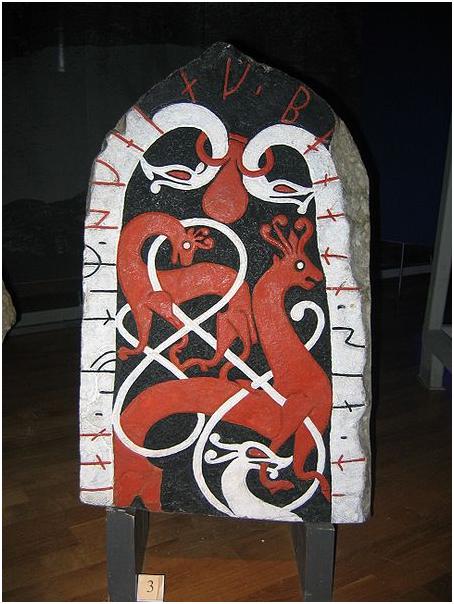 http://en.wikipedia.org/wiki/File:%C3%96l_Fv1911;274B,_Resmo.jpg  http://commons.wikimedia.org/wiki/File:Runestone_Skansen.jpg So whay did people stoped using runs and raising rune stones? During the period of Viking ages most of the rune stones were raised in memory of their dead relatives. The erected stones stood near roads so that those who passed by could see it. Those who died were buried in the burial grounds, which usualy were near the farm where they lived. Viking age burial grounds consisted most often of low, usually round grassy hills. The Viking Age reached its end in the early 1100s and people at that time stoped erecting runestones. The reason to this is that people started to be buried at the cementarys near the churches. Since christianity replaced the old belifs and as a result of this often, they placed a headstone or a cross on the grave. You could say that the headstones replaced the runestones as memorials of relatives who had died. When Christianity and the Church's men came to Sweden, they brought with them knowledge of the Latin letters. In a few hundred years regular people continued to carve runes when they wanted to write something. It was easy and cheap to get hold of a piece of wood for carving and to do it with a knife. To write a letters you needed a pen, ink and parchment - or in the future paper - to write on. Those were expensive stuff. But gradually it became more and more availible and people learned to write with Latin letters. It became increasingly common for children and young people to attend some form of school and was taught the art of writing. With time there was no need or intress in learning the art of carving runes anymore. Still this art and understanding did not compleatly disapeard and durin 1500s, 1600s, 1700s and even during the 1800s many people carved and used runse like in Dalarna (Sweden) when they would write something. But thats a different story.
Autor głowizny: Grim Dimmakaren
SOURCES:
Internet: http://en.wikipedia.org/wiki/Sigurd http://www.flickr.com/photos/brokendrumphotography/2424121659/ http://en.wikipedia.org/wiki/Runes http://www.svenskarunstenar.net/lankar.html Books: Lilla boken om runor - Lars Magnar Enoksen ISBN: 978-91-85507-96-2 Runor - Lars Magnar Enoksen ISBN: 978-91-88930-32-3 Skanska runstenar, Storpocket - Lars Magnar Enoksen ISBN: 978-91-88930-79-8 Svenska runor - Marit Ahlén, Thorgunn Snadal ISBN: 9789172093669  |
|
